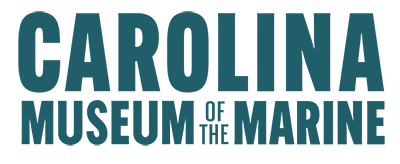Front and Center Newsletter – Vol. 2, No. 11, November 2023
FRONT AND CENTER
Vol. 2, No 11, November 2023
Happy 248th Birthday, Marines!
Mission
Honoring the legacy of Carolina Marines and Sailors, inspiring future generations.
Message from the CE0
Dear Marines and Sailors, Friends and Family,
It is with a heavy heart that we announce SgtMaj Houle’s plan to retire from the Museum at the end of November. There are not adequate words to express the positive impact he has had in the community and with the Museum.
SgtMaj is a “Hero” and a “National Treasure”, and we are blessed to have had the opportunity to serve alongside him. Fortunately, he is staying in the area and will continue to be a strong supporter, and he will stay involved as we move forward.
Please join us in a thunderous “Thank You” for all that he has accomplished. We would not be here today without him, and we owe him dearly.
On the Museum front, progress is “continuous”, and we thank you for all your support.
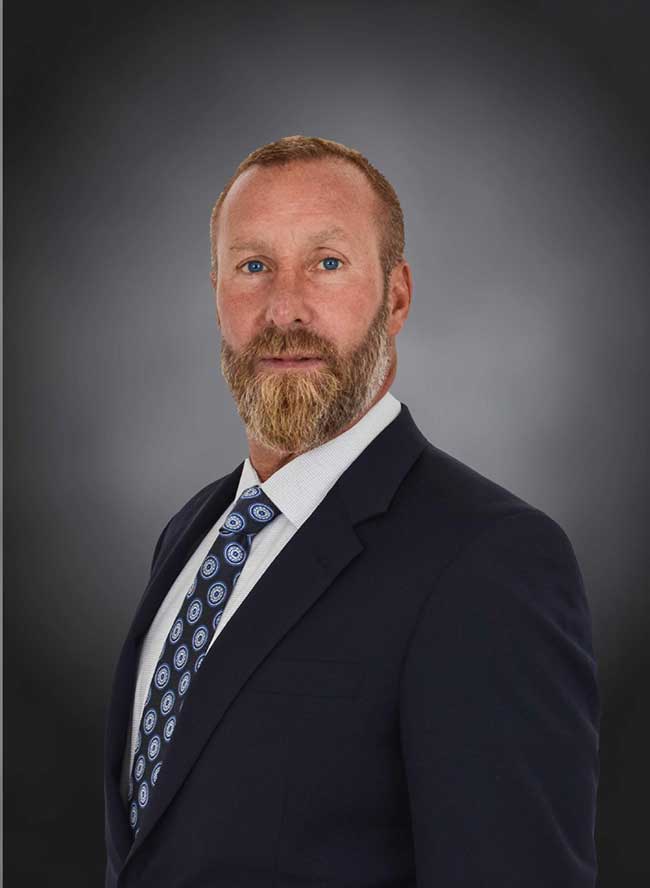

BGen Kevin Stewart, USMC (Ret)
Chief Executive Officer
A Community Remembers…
The 40th Beirut Memorial Observance Ceremony
More than 8,000 people paid their respects at Lejeune Memorial Gardens in Jacksonville, NC. The observance is held annually to honor the lives lost in the terrorist attacks in Beirut, Lebanon and Grenada on October 23, 1983. Secretary of the Navy Carlos Del Toro and Marine Corps Commandant General Eric Smith spoke at the event, reminding civilians and military in the audience to carry forward the memory of those whom we lost. 29th Commandant General Al Gray, USMC (Ret) attended the annual ceremony as he has since 1983. A record number of family members of the fallen were in attendance. Photos by LCpl Zachary Zephir. Visit DVIDS for more images. Click here to view the Memorial service.
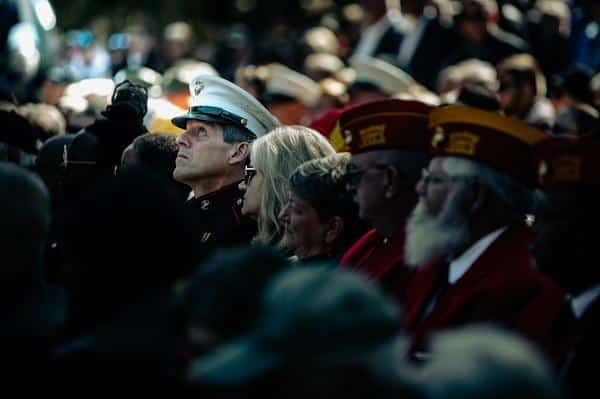
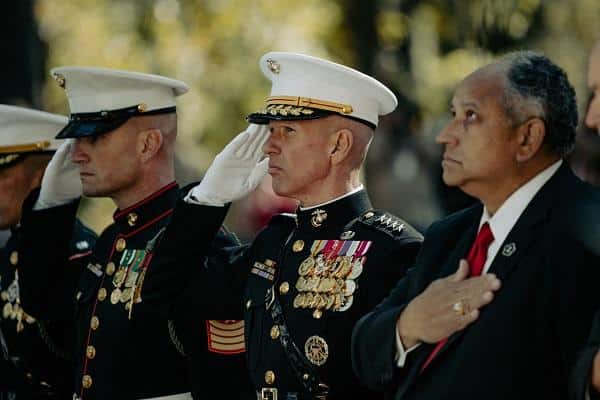
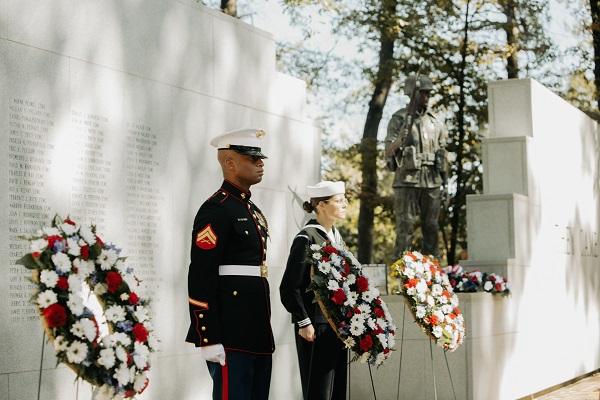
General Al Gray’s birthday guests stopped by to talk about their experiences with the 29th Commandant over his many years of service to this nation. Below, General Charles Wilhelm, USMC (Ret) was among the stars who attended.
(See all of the interviews celebrating General Gray and his legacy at General Al Gray’s 95th Birthday.)
Marine Corps Traits and Principles of Leadership
by James Danielson, PhD
USMC Veteran
The Marine Corps recognizes eleven principles of leadership and fourteen traits of leaders. In this and coming editions of “Front and Center,” we will present these principles and traits, discussing them as the Marine Corps understands them, and considering them in a broader perspective as they apply more generally to Americans whether or not they have served in the military. We will list these principles and traits, and then discuss them now and in the coming months.
Eleven Principles of Leadership
- Know yourself and seek self-improvement.
- Be technically and tactically proficient.
- Know your people and look out for their welfare.
- Keep your personnel informed.
- Set the example.
- Ensure the task is understood, supervised, accomplished.
- Train your Marines (and Sailors) as a team.
- Make sound and timely decisions.
- Develop a sense of responsibility among your subordinates.
- Employ your command within its capabilities.
- Seek responsibility and take responsibility.
Fourteen Traits of Leaders
- Justice
- Judgment
- Dependability
- Initiative
- Decisiveness
- Tact
- Integrity
- Enthusiasm
- Bearing
- Unselfishness
- Courage
- Knowledge
- Loyalty
- Endurance
As of 2020, there were about 180,000 Marines in the Corps, although there are plans to reduce the numbers a bit. When we consider that there are something more than 325 million Americans, the Marine Corps looks to be quite small, though admirably proficient. One of the important reasons for the remarkable effectiveness of the Marine Corps is its emphasis on the quality of the individual Marine, expressed in part by the eleven principles of leadership and the fourteen character traits of a leader. As we examine these principles and traits, we will get a sense of what it is like for an individual to grow and to develop as a human being, since anyone who will lead others must be able to govern himself.
This idea of governing oneself applies to all Americans because it applies to all human beings, and while governing self comes easier for some than for others, developing this skill is within the reach of everyone. If there’s a catch, it is this: one has to want it. The ancient Greek philosopher Aristotle observed that everything human beings do can be done well or badly. We human beings are the only creatures on earth who are capable of living on purpose, for reasons that make sense to us, and with serious human goals in mind, and we each can do this well or badly. To accomplish these goals we are compelled to cooperate with others who are pursuing their goals, and here we find the need for people individually to be skilled at governing themselves, and able, where necessary, to lead others.
In pursuit of this development of the self we have the first principle of Marine leadership: Know yourself and seek self-improvement. The explanation of this principle begins this way. “There is perhaps nothing more important for a leader than being able to recognize their [sic] own strengths and weaknesses. Leaders must be able to grow, change, and adapt.” There are few abilities more beneficial to a person than being able to examine himself honestly. The concerns here, of course, are the possibility of being insufficiently honest with oneself, and thus failing to see what needs improvement in the moment, or being overly harsh with oneself and becoming discouraged. People for whom self-reflection does not come naturally need to be aware of these possibilities in order to make success more likely over time. In short, we do well to follow the advice of the Marine Corps and seek to understand our individual strengths and weaknesses, developing the strengths and strengthening the weaknesses. As the Marines put it, leaders, and Americans more generally, need to be able to grow, change, and adapt. Read more…
Major Samuel Nicholas
First Leader of the Marine Corps
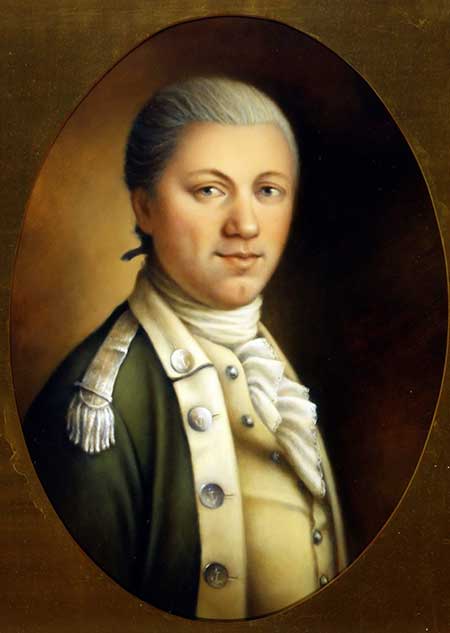
There is an interesting, eclectic website called ThoughtCo., that has various menus of topics like history, philosophy, geography, literature, visual arts and more. For each topic there are numerous sub-topics that allow readers to choose what to search and to learn. Under “American History” one of the sub-topics is what they call “American Revolution.” Here, readers will find this article: “American Revolution: Major Samuel Nicholas, USMC.”[i]
Samuel Nicholas was born in 1744 to a Quaker couple, Andrew and Mary Nicholas, in Philadelphia, which in the 18th century was the largest city in British America. Nicholas’ uncle, Andrew Shute, was a mayor of Philadelphia who, when Samuel was seven years old, facilitated his admission into the prestigious Philadelphia Academy, where young Nicholas came to know the children of the leading people of the city. When Nicholas graduated in 1759, he was admitted to the Schuylkill Fishing Company, which was “an exclusive social fishing and fowling club” where Nicholas made the connections that would shape his life. In 1768, Nicholas married Mary Jenkins, the daughter of a Philadelphia businessman who gave Nicholas control of the Conestoga Wagon Tavern, which admitted him to the Philadelphia tavern scene.
The American War for Independence began in April of 1775 with the Battle of Lexington in Massachusetts and surrounding localities. The Second Continental Congress resolved to establish a Marine Corps to serve with the Continental Navy, and even though Nicholas had no military training, members of Congress approached him with the idea of forming a Corps of Marines because of his prominence in Philadelphia and particularly in the cities taverns, “which Congress believed could furnish good fighting men.” Nicholas agreed to recruit men for a Marine Corps, and on November 5, 1775 was appointed Captain of Marines. Five days later, on November 10, 1775, Congress established the Continental Marines and authorized the formation of two battalions. On November 18, Congress commissioned Nicholas a captain and he quickly set-up shop at Tun Tavern where he began recruiting Marines to serve aboard the 30-gun frigate Alfred. A diligent worker, Capt. Nicholas raised five companies of Marines by year’s end, which provided Marines for service aboard the ships of the Continental Navy, then based at Philadelphia.
Nicholas took command of the Marines aboard Alfred, which was the flagship of Commodore Esek Hopkins, due to sail out of Philadelphia with “a small squadron” on January 4, 1776. Commodore Hopkins decided to sail to Nassau and raid British stores of weapons and munitions. Capt. Nicholas and a party of about 250 Marines and sailors spent the night of March 3, 1776 at Fort Montagu, advancing on the town of Nassau the next day. The Governor, Montfort Browne, was able to send most of the gun powder on the island to St. Augustine, Florida, but the Marines seized a large number of guns and mortars. Commodore Hopkins remained at Nassau for two weeks, finally sailing north, engaging and capturing two British ships, and acquitting themselves well in battle with the British warship HMS Glasgow. On April 8, the Americans arrived at New London, Connecticut, where Capt. Nicholas departed, returning to Philadelphia.
In response to the performance of Capt. Nicholas and the Marines at Nassau, Congress promoted him to the rank of major, and ordered him to remain at Philadelphia and raise another four companies of Marines. In December of 1776, Major Nicholas was ordered to take three companies of Marines to join with General George Washington’s army north of Philadelphia. Nicholas and the Marines were put under the command of Brigadier John Cadwalader with the assignment to cross the Delaware River at Bristol, Pennsylvania and attack Bordentown, New Jersey before moving on to Trenton. The American force was prevented from crossing the river because of ice, and so the Marines missed the Battle of Trenton on December 26. However, they did join Washington for the Battle of Princeton on January 3, 1777. This is the first time Marines fought under Army command.
When the British left Philadelphia in 1778, Nicholas re-established the Marine barracks there, and continued recruiting and doing administrative work. This part of Major Nicholas’ career is said to be the reason he is considered the first Commandant of the Marine Corps. Congress disbanded the Continental Marines in 1783, and Major Nicholas returned to private life. He died on August 27, 1790, and is buried in the Friends Graveyard at Arch Street Meeting House. Each year, on November 10, a wreath is laid at Major Nicholas’ grave to commemorate the birthday of the United States Marine Corps.
[i] The article may be found here: https://www.thoughtco.com/major-samuel-nicholas-usmc-2360618
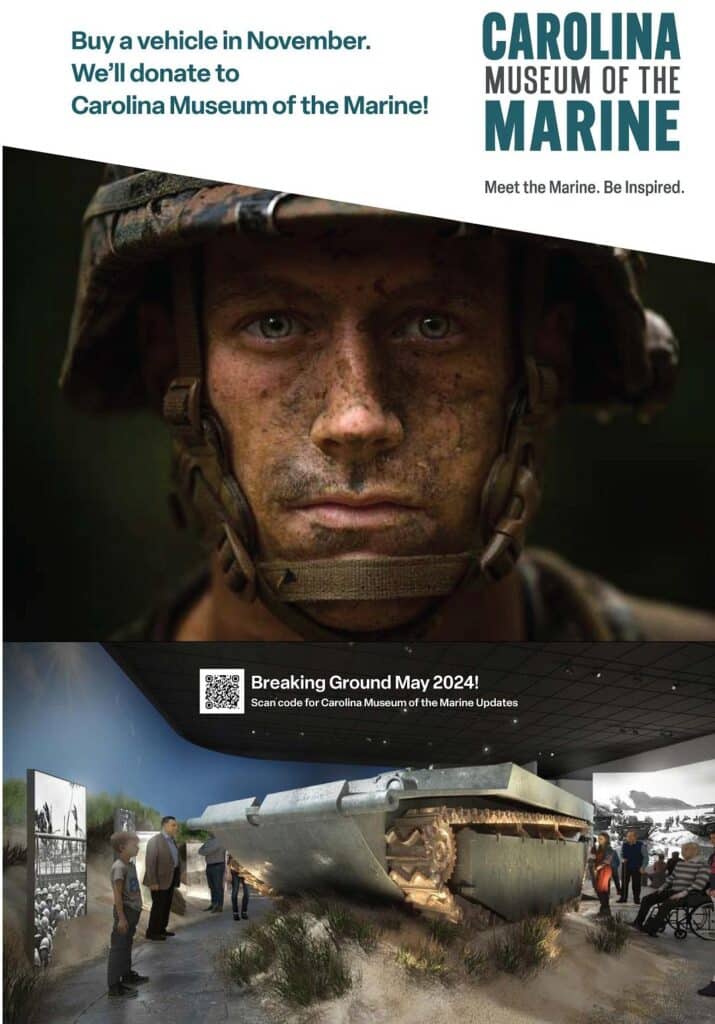
Please join us in supporting the mission of
Carolina Museum of the Marine.
When you give to our annual campaign, you help to ensure that operations continue during construction and when the doors open!
Stand with us
as we stand up the Museum!
Copyright November 2023
Carolina Museum of the Marine
2022-2023 Board of Directors
Executive Committee
LtGen Mark Faulkner, USMC (Ret) – Chair
Col Bob Love, USMC (Ret) – Vice Chair
CAPT Pat Alford, USN (Ret) – Treasurer
Mr. Mark Cramer, JD – Secretary
General Al Gray, USMC (Ret), 29th Commandant – Executive Committee Member
MajGen Jim Kessler, USMC (Ret) – Executive Committee Member
Col Grant Sparks, USMC (Ret) – Executive Committee Member
BGen Kevin Stewart, USMC (Ret), CEO, Ex Officio Board Member
Members
Col Joe Atkins, USAF (Ret)
Col George “Bill” Ayers, USMC (Ret), Emeritus
Mr. Mike Bogdahn, US Marine Corps Veteran
Mr. Keith Byrd, US Marine Corps Veteran
MGySgt Osceola “Oats” Elliss, USMC (Ret)
Mr. Frank Guidara, US Army Veteran
Col Chuck Geiger, USMC (Ret)
Col Bruce Gombar, USMC (Ret)
LtCol Lynn “Kim” Kimball, USMC (Ret)
CWO4 Richard McIntosh, USMC (Ret)
LTC(P) Robert Sander, US Army Reserve JAG Corps
LtGen Gary S. McKissock, USMC (Ret)
Col John B. Sollis, USMC (Ret)
GySgt Forest Spencer, USMC (Ret)
Staff
BGen Kevin Stewart, USMC (Ret), Chief Executive Officer
Ashley Danielson, Civilian, Vice President
SgtMaj Joe Houle, USMC (Ret), Operations and Artifacts Director
CWO5 Lisa Potts, USMC (Ret). Curator


